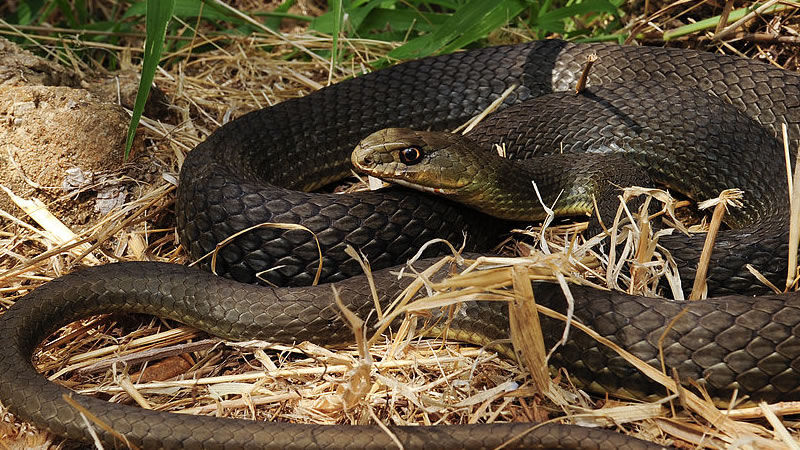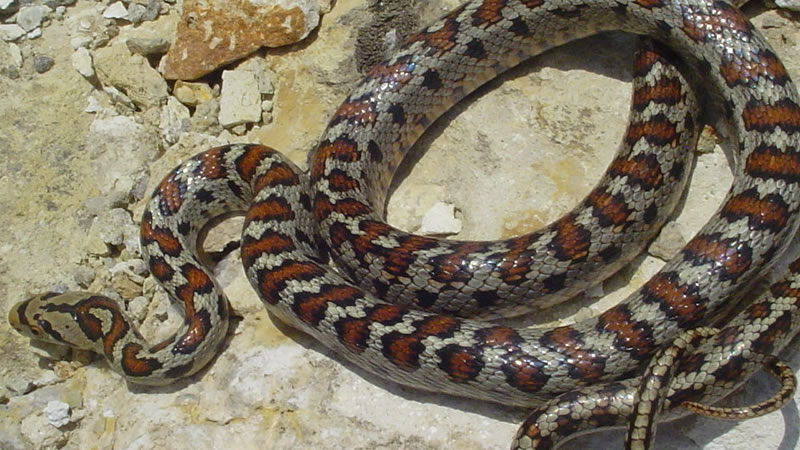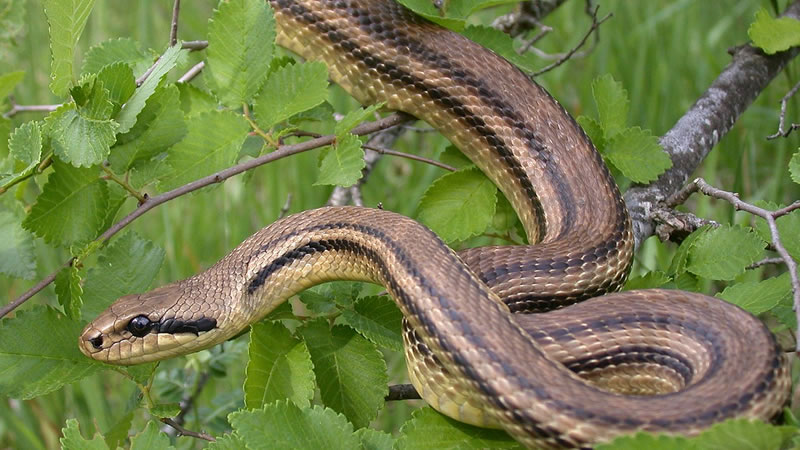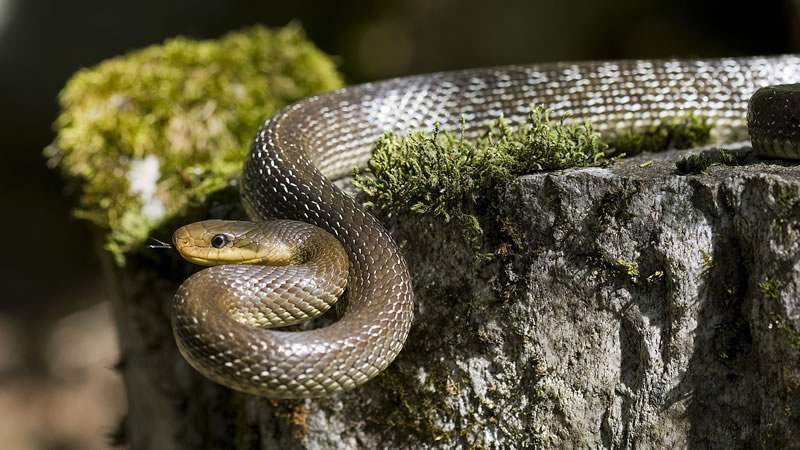
Eastern Montpellier snake (Malpolon insignitus)
Vipers are species of venomous snakes belonging to the Viperidae family. Their geographical distribution includes all parts of the world except Antarctica, Australia, New Zealand, Madagascar, Hawaii, various other isolated islands and north of the Arctic Circle. All species of the family have teeth connected to virial glands.
The viper is a medium-sized reptile, which rarely reaches up to one meter in length. The viper’s body is cylindrical in shape, male snakes are ash colored while females are lighter beige. It is covered with scales, as is the head. Also, on the back the snake has dark designs in the shape of a checkered line, while on the head the shapes it has form the letter X or L. Females are shorter in length than males. Its head is wider towards the back and is strongly distinguished from the body. Her tail is short. She has strong vision even in the dark, while the iris of her eyes has the ability to change depending on the intensity of the light. In the upper jaw it is equipped with two pointed teeth, larger than its common ones, which are connected to glands that secrete poison. This snake is found in riverside areas with rocky formations, as it has the ability to climb and swim.
Most species are oozootic. The word viper itself (scientific name for snake) comes from the Latin words vivo: to live and pario: to give birth. It gives birth to 10-20 live young, which have venom.
When the viper bites the prey, then the glands are pressed and poison is secreted, which passes through the teeth into the victim’s wound. Depending on the circumstances, the viper has the ability to determine the amount of venom it will pour on its victim. More generally, the amount of venom is proportional to the size of the snake.
Adult vipers feed on small animals such as mice, other reptiles and birds. Her poison is dangerous. It typically contains many proteinases (enzymes that break down proteins). These cause symptoms of pain, swelling and necrosis, as well as blood loss. Death usually results from a drop in blood pressure. Vipers never attack humans unless stepped on, caught, or directly threatened.
If someone is bitten by a venomous viper, prompt medical attention is required. It is important not to tear or cut the skin at the bite site and not to bind the bitten limb. The venom spreads mainly through the lymph and not the venous or arterial route, so inducing bleeding at the bite site is pointless but also dangerous, because of the traumatic shock that can be caused and worsen the patient’s condition. Also a tight bandaging of the bitten limb blocks blood circulation and can cause necrosis, gangrene and thrombosis, so it is important to maintain normal blood circulation. In the most severe cases, if not fatal, the viper bite leaves a permanent scar at the site of the bite, or amputation of the limb may be required. The patient may also be allergic to the bite. In the vast majority of cases of poisonous bites in our country, the symptoms subside after appropriate medical treatment and the patient fully recovers.
A small, stocky and relatively calm snake easily distinguished by the dark zig-zag on the back and the large head with a horn-like protuberance on the snout. It is the only potentially dangerous snake of Corfu with two tubular teeth in the front of the upper jaw to channel the venom. It has relatively strong venom but fatal bites are very rare. Her bite should always be treated promptly in a hospital by specialist staff. It feeds on invertebrates, lizards, rodents and small birds. Poisonous. 35-70 cm.



